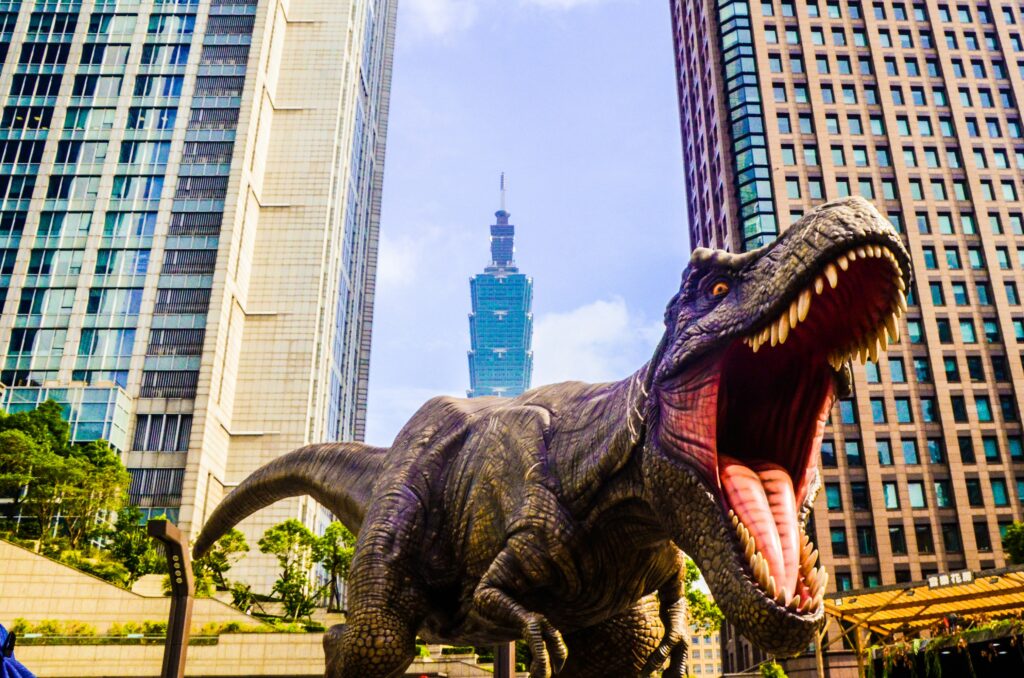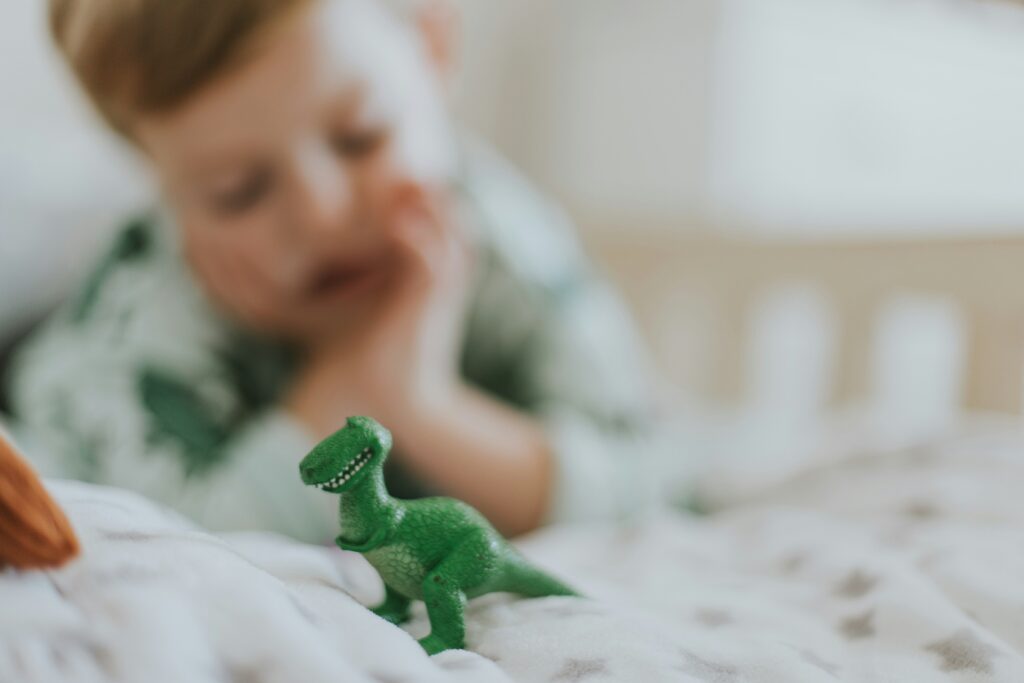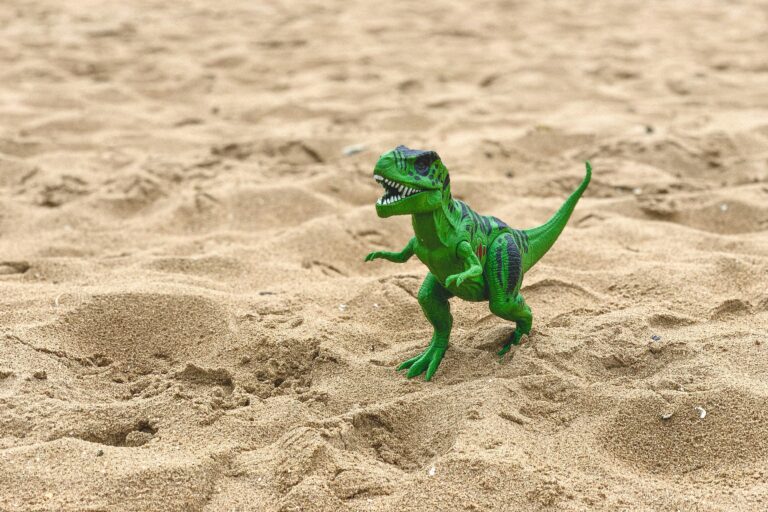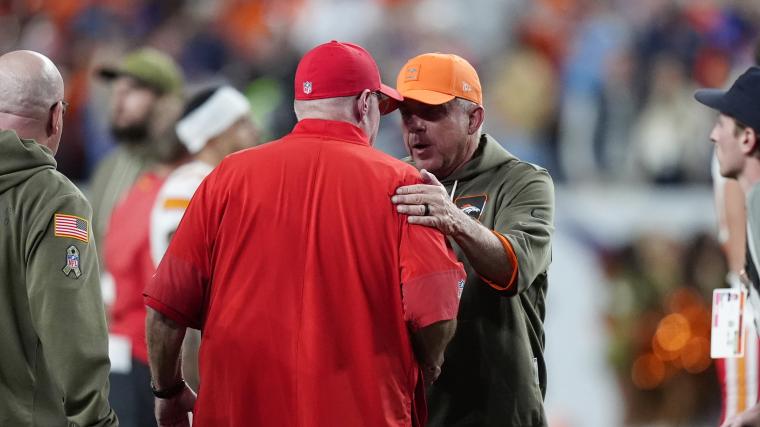
When I saw the trailer for Jurassic World: Rebirth, something strange happened. My heart raced, my eyes lit up, and suddenly I felt like a kid again. A giant T‑Rex stomped through smoke. People screamed and ran. And even though I was safe behind a screen, I could feel the excitement in my chest.
Why do we still love dinosaurs?
Not just kids, but adults too. Parents who once had toy Stegosauruses are now buying dino T-shirts for their kids. Teenagers post memes of raptors in hoodies. Museums still draw crowds with towering skeletons. And Hollywood keeps reviving dinosaur movies because we just can’t get enough.
This isn’t just nostalgia or good marketing. It turns out, our fascination with dinosaurs has deep roots in psychology. So let’s investigate what’s really going on inside our brains when we say, “I love dinosaurs.”
A Scary Creature That Won’t Bite
First, let’s talk about fear. But not the kind that makes you hide under the covers. Dinosaurs give us safe fear, a thrill that tickles the spine but never actually harms us. Psychologists call this benign masochism, which means we enjoy a little fear, as long as we know it’s not real.
Think about rollercoasters, spicy food, or sad movies. These things stir up strong feelings, but we choose to feel them. Dinosaurs work the same way. They’re scary, yes. But they’re extinct. You can stare into the jaws of a T‑Rex at the museum and feel your heart race, knowing full well it won’t move.
This controlled fear is part of why kids and adults alike enjoy watching dino movies and playing with dino toys. It gives us a rush without the risk. A study even showed that people who enjoy this kind of “harmless thrill” tend to be more open to new experiences (PsyPost).

Little Kids, Big Obsessions
Ask a five-year-old to name a dinosaur, and they might rattle off ten in a row, complete with facts about their size, diet, and time period. For kids, dinosaurs aren’t just cool creatures. They’re learning tools.
Psychologists have found that when children have “intense interests,” like dinosaurs or trains, they actually develop better memory and focus skills. This is part of schema development, a fancy term for how kids organize knowledge in their brains.
One study from Indiana University found that children with a deep interest in topics like dinosaurs scored better on tests and showed stronger attention skills (The Cut). So when your child corrects you and says, “Actually, that’s a Parasaurolophus, not a Brontosaurus,” they’re not just showing off. Their brain is growing.
The Feeling That Stretches Your Mind
Let’s talk about another feeling: awe. It’s what you feel when you stand at the edge of the Grand Canyon, look up at a rocket launch, or stare at the giant fossil of a dinosaur that once walked the earth.
Awe is a powerful emotion. It happens when you come across something so big or mysterious, it makes you feel small, in a good way. It opens your mind and makes you more curious, generous, and thoughtful. Researchers have even found that awe can improve mental health and reduce stress (Wikipedia on Awe).
Dinosaurs are perfect awe-triggers. They were gigantic. They lived millions of years ago. Some could fly. Some had feathers. And they vanished in a way that still leaves questions. When people experience dinosaurs, whether in a museum or a movie, they aren’t just being entertained. They’re being mentally stretched in the best possible way.
A Love Passed Down
There’s something magical about sharing dinosaur facts across generations. Parents who loved The Land Before Time are now watching Jurassic World with their kids. Kids bring home dinosaur drawings and books, and parents smile because they remember doing the same.
This shared interest creates something psychologists call shared nostalgia. It’s not just remembering the past, it’s building emotional bridges between people. Families bond over favorite dinosaurs. They visit museums together. They argue (playfully) over whether the T‑Rex or Velociraptor is cooler.
Because dinosaurs don’t belong to just one time or one generation, they become a timeless connection point. They don’t get outdated. They stay awesome.
The Puzzle That Never Gets Solved
Dinosaurs are real, but also mysterious. We’ve never seen them alive. We only know them through fossils. And every year, scientists discover something new. Did they have feathers? What colors were they? Did they make sounds?
Our brains love to solve puzzles. That’s why so many people enjoy crime shows or escape rooms. Psychologists call this drive cognitive closure, the desire to find answers and complete unfinished stories (Mother.ly).
Dinosaurs are the perfect unsolved mystery. We can study them. We can guess. But we’ll never fully know. That leaves just enough space for imagination—and imagination keeps us hooked.
A Reminder That Time is Huge
And finally, dinosaurs remind us of time. Big time. They ruled the earth for over 150 million years. Then, in one big event, they vanished. Gone. That thought hits us in a place we don’t often talk about.
This is where existential psychology comes in the part of psychology that deals with life, death, and meaning. Dinosaurs remind us that even the strongest creatures don’t last forever. It makes us think about our place on Earth. About how we live. And what comes next.
It might sound heavy, but it’s also beautiful. Dinosaurs teach us that life is precious and ever-changing.
So Why Now?
With Jurassic World: Rebirth hitting theaters, the world is buzzing about dinosaurs again. But this isn’t just about excitement. It’s about understanding why that excitement keeps returning.
Whether you’re five or fifty, the feelings you get when you see a dinosaur fear, awe, curiosity, nostalgia, are all rooted in how your brain works. Dinosaurs are more than just ancient animals. They are emotional mirrors. They show us how we think, grow, and feel.
So the next time someone asks, “Why do people still care about dinosaurs?” you can tell them it’s not just because they’re cool.
It’s because dinosaurs remind us who we are.




